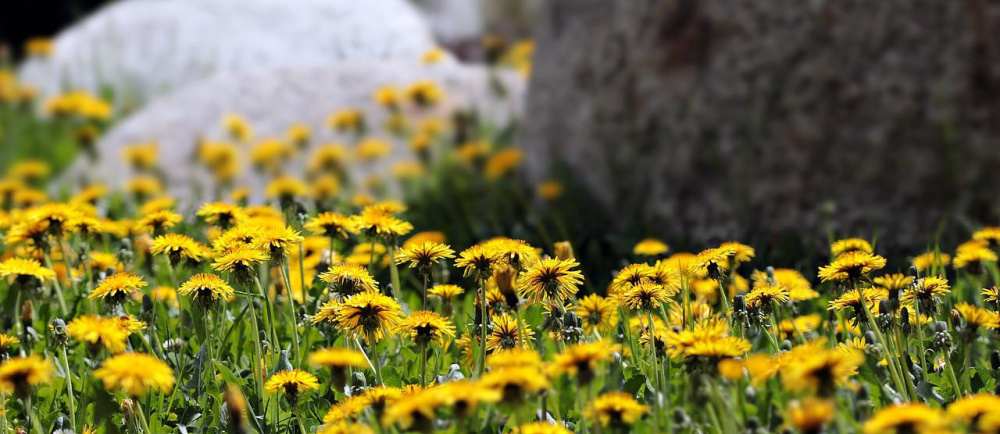
Some of the links on this page contain affiliate links. Renaissance Path is a participant in the Amazon Associates Program, an affiliate advertising program that provides a way for websites to earn advertising fees by linking to products. We only link to products we normally use and trust. When you purchase an item through the link we receive a small commission at no additional cost to you. This helps pay for the costs associated with running this blog. Your support is greatly appreciated. Thank You!
- 13 Amazing Uses For Dandelions
- How to Identify a Dandelion
- Where to Find Dandelion
- Dandelion Lookalikes
- History of Dandelion
- Best Times to Forage for Dandelions
- Benefits of Dandelion
- Dandelion In Tradition Chinese Medicine
- Dandelion Interesting Facts
- 13 Amazing Uses for Dandelion
- Possible Drug Interactions or Contradictions
- Final Thoughts
13 Amazing Uses For Dandelions
Spring has sprung and dandelions are coming up everywhere. Most people look at dandelions as pesky weeds. Once I learned how good dandelions are for us it really changed my evil thoughts about them. Hopefully, by the end of this blog post, I have succeeded in changing how you feel about dandelions.
When I see dandelions I think about all the amazing things I can make with them. Did you know the flowers are edible? Yes! You can eat them and they are also highly nutritious for you. The whole plant is edible. This weed has medicinal and nutritional properties.
How to Identify a Dandelion
Just about anyone can identify a dandelion. Even a child. It is one of the first plants most people learn about first. Dandelions have a bright yellow flower with a single hollow stem. The stem has a milky sap when plucked. The stem only grows one flower, there are no other stems branching out. The plant has basal leaves(which means they are at the base of the plant). The leaves are lobed meaning they have jagged edges. The name dandelion comes from the french word ‘dents de lion’ which means leaves resemble lion’s teeth. Pretty cool huh? The leaves grow in a rosette at the base of the stem.
Where to Find Dandelion
You won’t have to look far to find dandelion. It’s most likely growing in your yard. It can grow just about anywhere, along roadsides, lawns, pastures, orchards, and meadows. Dandelions grow in shaded and full sun. Dandelions bloom in spring and also in fall.
Dandelion Lookalikes
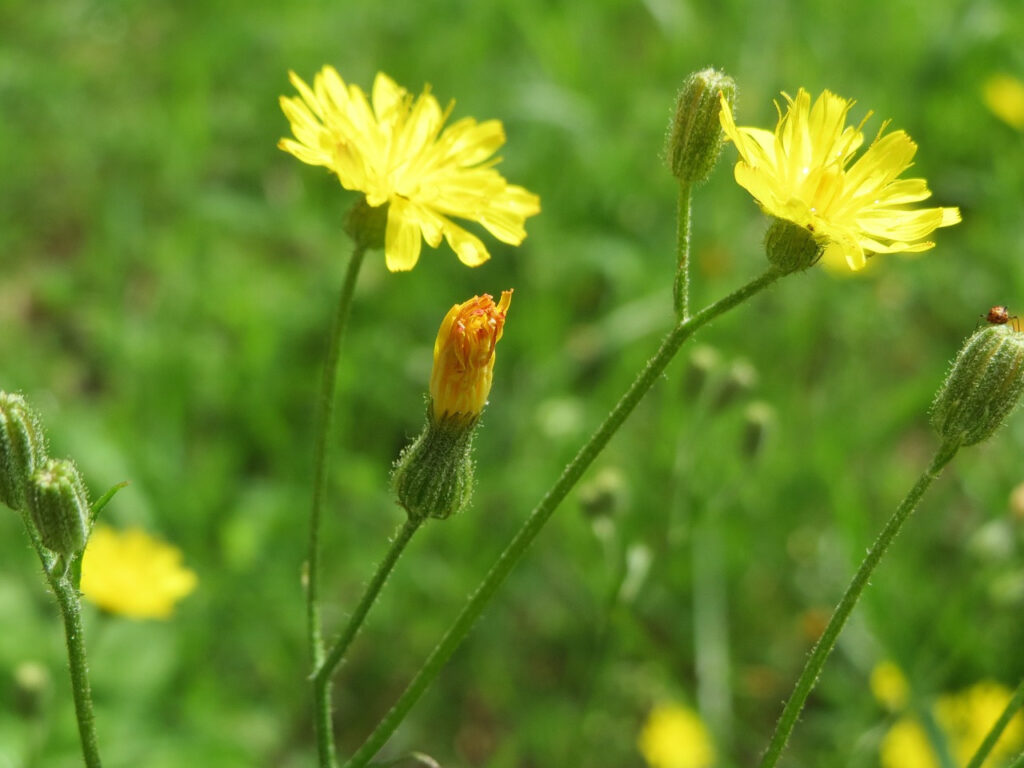
The plant most commonly mistaken for dandelion is Cats Ear or False Dandelion. Cats ear has toothed leaves but they are a bit thicker than dandelion leaves, they are also fuzzy and soft hence the name Cats Ear. Their stems branch out. There can be several flowers branching out from one stem. The stems are NOT hollow. The flowers are way more small, delicate and thinner than a dandelion.
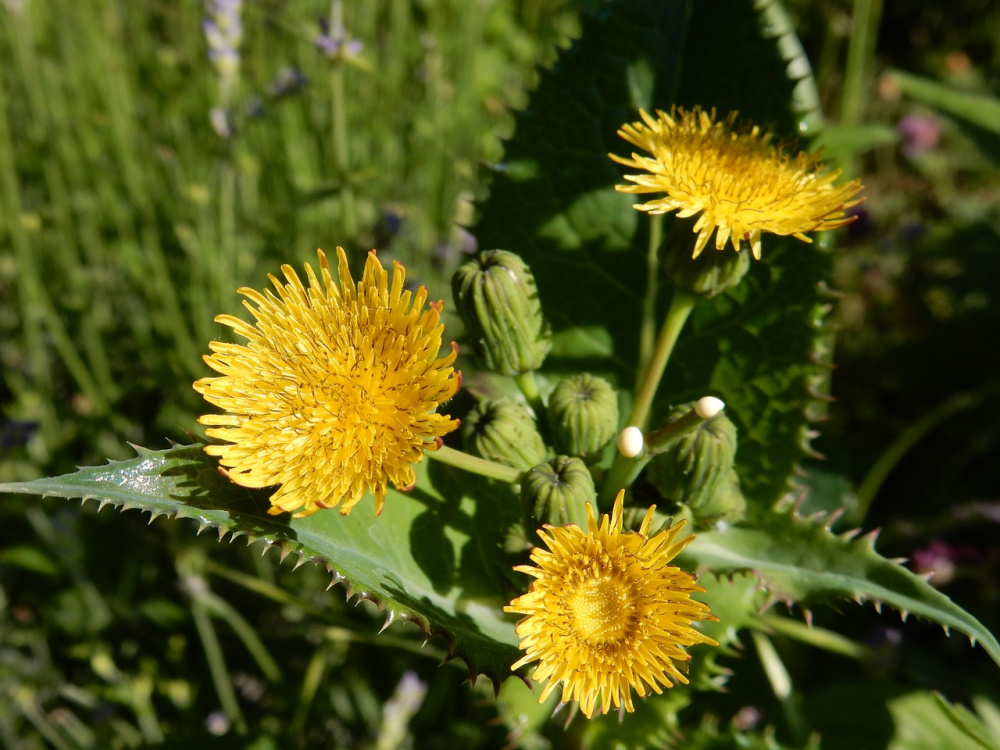
Sow Thistle is another look alike. One of the big differences to me is the leaves. Their leaves are deeply lobed with spiny toothed and leaves can be all the way up the stem of the plant. The flowers are branched out in clusters.
History of Dandelion
Dandelions originated from Eurasia. There are writings describing dandelion being used in ancient Eygpt, also by the Greeks, Normans, and Romans. It’s been used by the Chinese for over 1000 years as medicine.
Dandelions were brought over to the Americas on the Mayflower on purpose for medicinal use.
Dandelions have been used for centuries. They were given as a tonic for everything from the plague to warts.
By 1672 dandelion was pretty well established across New England. The Spanish brought dandelion to California and Mexico. The French brought it to Canada.
Best Times to Forage for Dandelions
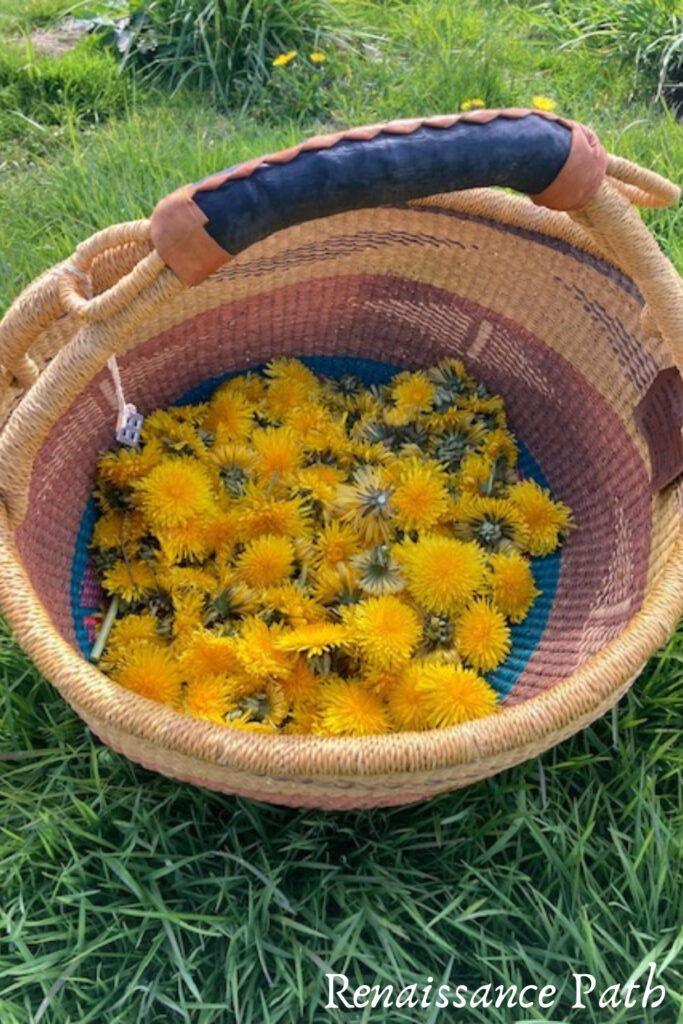
When looking to forage for dandelions you want to make sure that you’re collecting from an area that isn’t sprayed with chemicals. You also wouldn’t want to collect from areas where chemicals have been dumped into the ground. Keep in mind, that you definitely don’t want to pick where animals are going to the bathroom. Eew.
The best time to collect flowers is in the late morning or early afternoon when the morning dew is evaporated and blooms are open to receive the sun.
For collecting dandelion leaves the best time is early springtime when leaves are nice and tender.
The general rule is when harvesting any type of roots is you want to wait till fall when all the energy goes back to the roots. A lot of herbalists believe this is when the medicinal compounds are at their highest levels.
However, you can harvest dandelion roots during spring and summer. They tend to contain more bitter compounds like sesquiterpene. This compound would be better for stimulating the liver and bile. During the fall the roots tend to contain more inulin which helps stimulate the growth of beneficial bacteria in the gut. Healthy bacteria impact digestion, and immune health.
Benefits of Dandelion
The latex in dandelions is great for warts. Herbalists recommend applying the latex to the wart several times a day.
Dandelion acts as a diuretic. A small study showed dandelions have the ability to increase urination(1).
Dandelion was shown to reduce blood pressure. It’s thought this has something to do with its high potassium content. Potassium can help lower blood pressure. Dandelion greens contain 397 mg of potassium per 110 grams(2).
It has anti-diabetic properties. It is due to the bioactive chemical components chlorogenic acid, taraxasterol, chicoric acid, and sesquiterpene lactones. These compounds are anti-inflammatory and were shown to reduce blood sugar levels. In less developed countries dandelion is often used as an anti-diabetic plant(3).
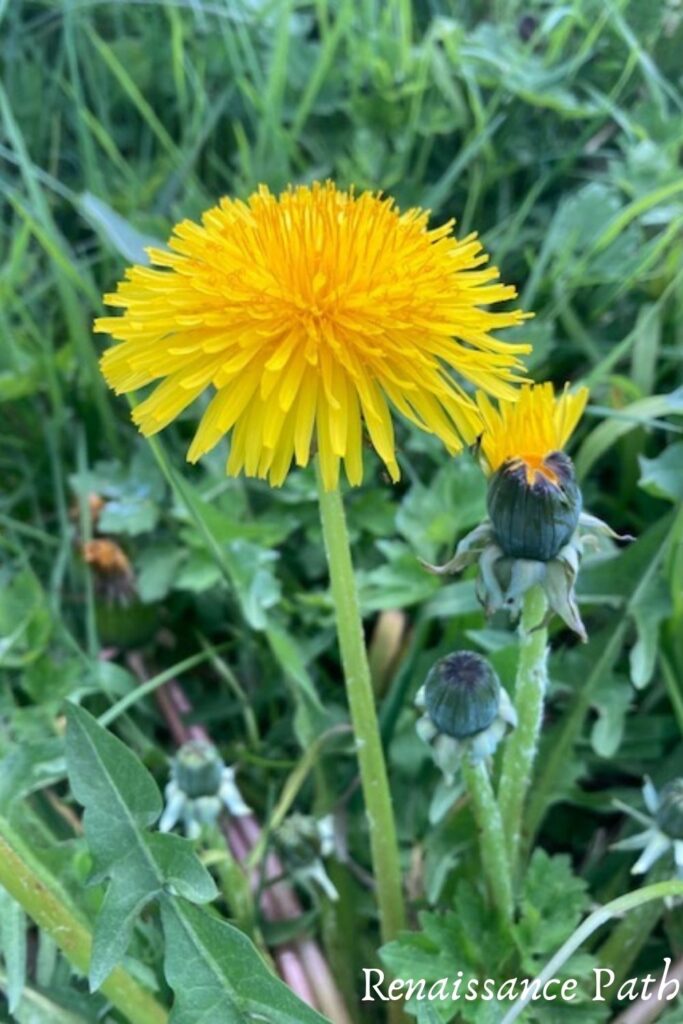
Dandelion is high in fiber and is a great pre-biotic.
It is anti-inflammatory, anti-oxidative, analgesic(pain relieving), and has anticoagulatory properties(4).
Dandelion has anti-rheumatic properties. Taraxasterol a triterpene found in dandelions was shown in mice studies to have protection against rheumatoid arthritis via modulation of inflammatory markers(5).
Dandelion is great for skincare too. It is loaded with antioxidants like vitamin A and C. The flowers are rich in polyphenols. Polyphenols are great for skin health. They help repair and rejuvenate skin. They also can help protect against cancer and sun damage.
Dandelion is beneficial in preventing high cholesterol and atherosclerosis and can help reduce coronary artery disease(6).
This little weed has more vitamin A than spinach and more vitamin C than tomatoes.
Dandelion was shown to have a protective effect on liver health(7),(8).
Dandelion has been known in China to help with lung issues. Recent animal studies showed a significant reduction in lung inflammation in those that received dandelion(9).
Dandelion In Tradition Chinese Medicine
Traditional Chinese Medicine has been using dandelion for at least 1000 years. It is said to expel fire toxicity and heat. TMC practitioners say it cools the blood and reduces swelling.
In TMC, Dandelion (Pu Gong Ying) is used for treating the following conditions boils/carbuncles, clogged milk ducts, mastitis, sore throat, uveitis, lymphadenitis, and liver issues.
Dandelion Interesting Facts
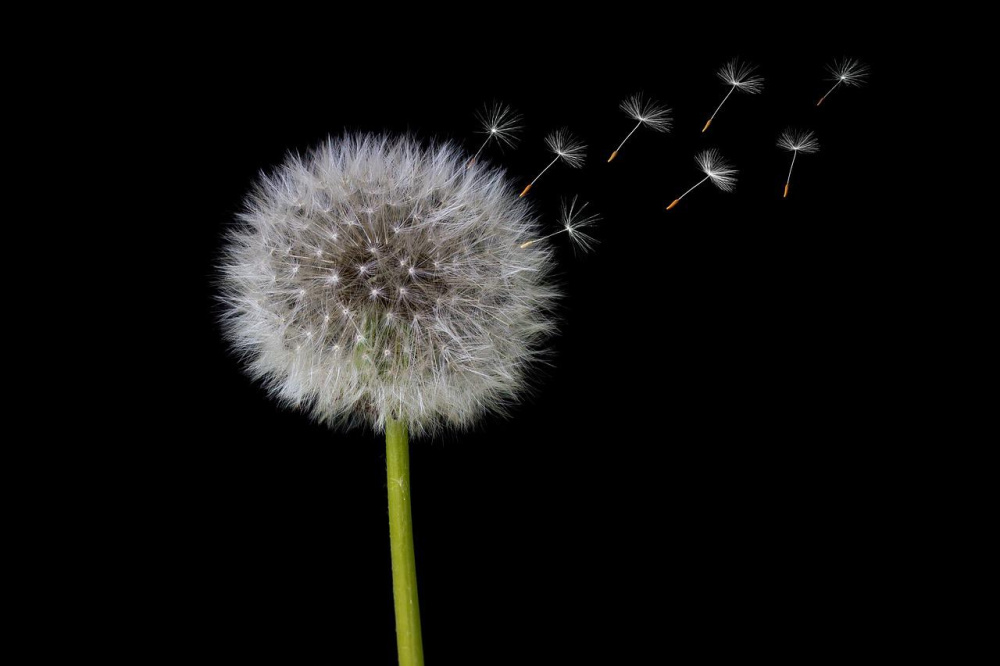
Dandelions are apomictic, meaning the flowers open each morning when the sun rises and close at night when it gets dark. Once the flower is fully mature it doesn’t open until the seeds are ripe, then it will open up into a fluff ball.
Dandelion seeds can be carried up to 5 miles away.
The dandelion is the only flower representing the whole celestial body. The sun, the moon, and the stars. The flower represents the sun, the puffball represents the moon, and the seeds that fly away represent the stars.
Not only do pollinating insects and birds drink the nectar from the flower, birds eat the seeds.
Dandelions are usually some of the first plants to grow after wildfires or avalanches. They call these pioneer plants or ruderal plants.
According to Steve Sobkowaik from The Permaculture Orchard he says having dandelions in your yard or orchard is an indicator plant. Dandelions can tell you a lot about your soil. It could be trying to tell you your soil is compacted, dandelions have a long taproot to go down far to reach nutrients because the soil is too compacted.
Second, it could be because your soil is deficient in calcium. Dandelions are rich in calcium. Because the taproot goes down far it pulls calcium up into the flower and leaves and when those die off it feeds the soil calcium. So dandelion is a soil calcium builder.
Another reason you might be experiencing dandelion is your soil might be too acidic. One more reason is your grass might not be getting enough sun, grass likes at least 8 hours of full sun. If grass doesn’t get enough sun it will thin out and dandelions will take its place. Dandelions prefer the sun. So pay attention to where you see dandelions growing. If you really pay attention to nature and plants, they are trying to tell us something. Mother nature is so smart.
Dandelions can be used to make natural rubber. When I heard this I was shocked. There is a specific dandelion called Taraxacum kok-saghyz often referred to as TKS. A company called Continental Tires has developed tires made from natural rubber from the dandelion root. The Russian dandelion root contains latex with a natural type of rubber. This is exciting because it is a sustainable way to get natural rubber where as the rubber tree only grows in certain areas close to the Equator and it takes on average 7 years to produce rubber. The dandelion can grow in more climates and can provide rubber a lot quicker.

13 Amazing Uses for Dandelion
There are so many ways to use dandelion. It can be used as food. It can be used to make herbal medicines.
Dandelion flowers can be made into tea. Kathie from Homespun Seasonal Living has a great recipe.
Dandelion coffee is really delicious. Try this recipe from Elana’s Pantry.
Greens can be used in salads, pestos, stews or soups. The southern food blog Biscuits and Such has this Dandelion greens salad with warm bacon dressing looks so yummy.
Dandelion flowers can be dried and used to make an infused oil.
The flowers can also be used in a dandelion salve.
If you have digestive issues you might want to consider using bitters. Digestives bitters are easy to make and can be very helpful. Tradition Medicines has a great recipe.
Dandelion flower jelly is another thing you can make from dandelion petals. I like this recipe on YouTube.
You can make dandelion wine too! Here is a recipe from the blog Practical Self Reliance.
Dandelion kombucha. This recipe on the Herbal Academy has an amazing recipe for dandelion and fennel kombucha
Dandelion cookies from Homestead Lady. These are gluten free and Paleo to boot!
Dandelion Soap using the whole plant from Grow Forage Ferment Cook.
Humans have been using dandelions as medicine for 1000 plus years. One method of turming it into medicine is to make a dandelion tincture. You can read Barbi’s recipe on her blog The Outdoor Apothecary.
Another way to use dandelions is to make infused vinegar. Grow Forage Cook Ferment has a lovely recipe on her blog.
Dandelion Mead is one more thing you can make. The blog Almost Off Grid has an excellent recipe for dandelion mead.
Possible Drug Interactions or Contradictions
Certain antibiotics like Quinolone antibiotics.
Water pills or potassium-sparing diuretics. Dandelion has large amounts of potassium. Taking water pills and dandelion can cause the body to hang onto too much potassium.
Blood-thinning medications that help to treat or prevent blood clots.
Lithium. Dandelion may decrease the body’s ability to get rid of lithium.
Because dandelion was shown to lower blood pressure, taking dandelion while taking prescription blood pressure meds could make blood pressure drop too low.
Any medication changed by the liver (Cytochrome P450 1A2 (CYP1A2) substrates). medications like haloperidol, ondansetron, amitriptyline, Valium, estrogen, entacapone, digoxin, entacapone, irinotecan, lamotrigine, Ativan, mevacor, meprobamate, morphine, and Serax. Alway ask you doctor or pharmacist before taking any new supplement or herb.
Anti-diabetic drugs like Metformin or Glyburide. Dandelion is known for its ability to lower blood sugar.
Final Thoughts
So there you have it dandelions are not just a pesky weed, are they? They are nutritious, full of antioxidants, and have medicinal properties! I hope you try some dandelions real soon and let me know what you think in the comments below.
Much Love,
Melissa
If you like to learn more about herbs and their healing properties please check out my post on Usnea.
This website is for educational purposes only. The information provided by Renaissance Path is not intended to diagnose, treat, or cure any diseases. Please consult a qualified health care professional for medical advice.
Leave a Reply